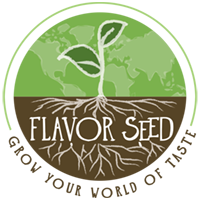
Each year, the Environmental Working Group (EWG) releases its Dirty Dozen and Clean Fifteen lists, ranking fruits and vegetables based on pesticide residue levels. These reports help health-conscious consumers make informed decisions about when to buy organic and when it's okay to go conventional.
Here’s a quick breakdown of the 2025 update, plus what it means for your grocery cart and your health.
The 2025 Dirty Dozen: Still a Case for Going Organic
The Dirty Dozen list features produce that tested highest for pesticide residues, even after washing and peeling. If you’re going to prioritize organic purchases, this list is where to start.
🥇 Top 3 Offenders
- Spinach (#1) – Takes the top spot this year, moving up from #2
- Strawberries (#2) – Down one rank, but still a heavy hitter
- Kale, Collard & Mustard Greens – Holding steady at #3
📈 Biggest Movers
- Cherries jumped 4 spots, climbing from #10 to #6
- Pears and Apples each dropped a bit, but remain on the list
🆕 New to the List
- Blackberries (#10)
- Blueberries (#11)
- Potatoes (#12)
The inclusion of blueberries and blackberries signals concern around berries in general – a favorite for kids and smoothies. These are now a top priority to buy organic.

The 2025 Clean Fifteen: Safe Bets from the Produce Aisle
On the flip side, the Clean Fifteen list includes produce with little to no detectable pesticide residue. These are typically safer to buy conventional, especially if you're shopping on a budget.
🥇 Top 3 Cleanest
- Pineapple – Up 2 spots to take the cleanest title
- Sweet Corn – Steady at #2
- Avocados – Still a top choice despite dropping 2 spots
🆕 New Additions
- Cauliflower (#10)
- Bananas (#11)
🍌 Notable Risers
- Cabbage, Watermelon, and Carrots all rose 2 spots
- Papaya edged up as well
🍄 Big Drops
- Kiwi fell 6 spots, now at the bottom of the list (#15)
- Mushrooms dropped 2 spots, but still made the cut

📉 Why the Changes Matter
The 2025 rankings reflect EWG’s updated methodology, which now considers not just the amount of residue but also pesticide toxicity. That’s why berries – especially blackberries and blueberries – are suddenly ranked much higher in concern. Even potatoes, often thought of as safe when peeled, made a surprising appearance.
🛒 What This Means for Grocery Shopping
If you're trying to balance health and budget:
- Buy Organic: Spinach, berries, cherries, potatoes
- Safe Conventional Picks: Pineapple, sweet corn, avocados, bananas, cauliflower
When shopping for kids or if you eat a lot of one item (hello, smoothies and salads), it’s worth spending a little extra to go organic where it counts.
🌱 Bonus Tip: Use Seasonings with Clean Ingredients
At Flavor Seed, we care deeply about clean eating. All of our organic seasoning blends are made without additives, fillers, or hidden chemicals – so you can season your food confidently, no matter what’s on your plate.

